Battle of Hastings 2014 Re-enactment in Pictures: Sun Shines on 948th Anniversary
After a two-year absence, the Battle of Hastings re-enactment was staged over the weekend at Battle Abbey on 11 and 12 October and thankfully, the sun came out for much of the afternoon.
The event was cancelled last year to allow the grass to grow back at the Abbey, and had been called off the year before following health and safety concerns due to wet weather.
The Battle of Hastings was fought 948 years ago today on 14 October 1066 between the English army under the last Anglo-Saxon King Harold II and the invading Norman-French army of Duke William II of Normandy.
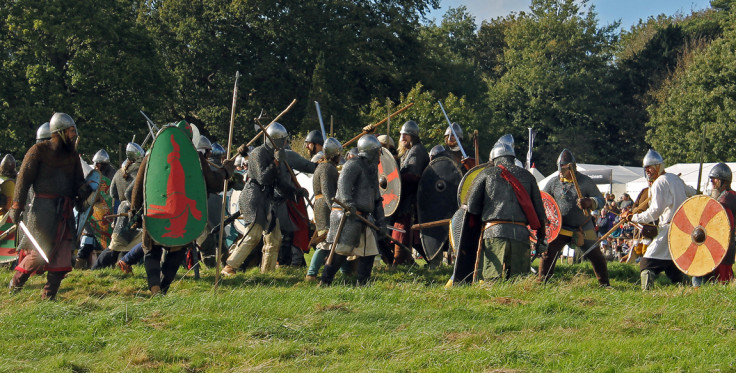
King Harold was killed in the battle and William was crowned King of England, which started the Norman Dynasty from 1066-1154 while the Norman dukes and monarchs remained in control of the country.
IBTimes UK went to check out the myriad activities and dramatic battle re-enactment featuring 400 costumed actors, who are all part of several professional re-enactment groups that focus on portraying medieval Normans, Anglo-Saxons and Vikings, the most common people fighting over England during the 8<sup>th to 11<sup>th century AD.
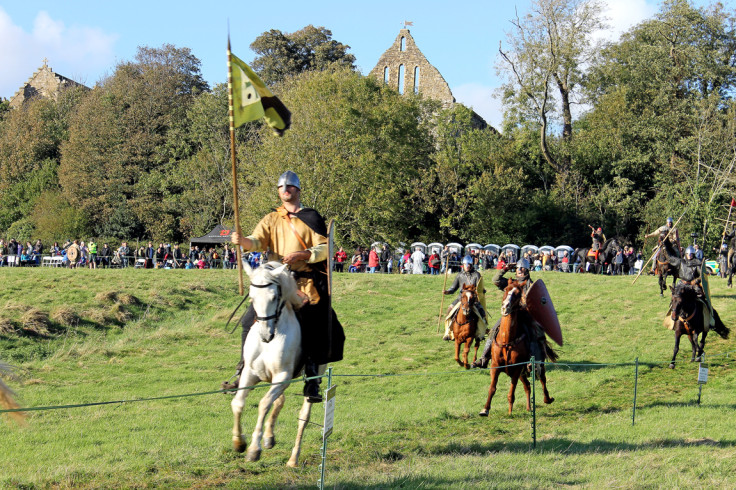
Each re-enactment group has to be insured and uses prop weapons from special suppliers that meet safety standards. Over the weekend, the actors usually camp out on Battle Abbey's grounds, creating authentic medieval Norman and Anglo-Saxon period tent campsites for the public to view.
English Heritage coordinates the Battle of Hastings re-enactment by discussing manoeuvres with all the groups, and then on the day, English Heritage staff give instructions over radio to the actors playing King Harold and Duke William.
Just like a real army, the leaders inform their generals and commanders, who then instruct the rest of the troops.

In the Anglo-Saxon camp, we met the Hrafnslith group (pronounced "Rafenslif"). Meaning "Troop of the Raven", this group is based in Dorset and consists of 30 members from all walks of life, including a carpenter, IT director, dental technician, student and bookseller, who meet up once a week to practice.
During the battle, painter and decorator Tony Thorpe (second from right in photo above) was Hrafnslith's battle commander.
Fellow soldier Vincent Bruford (second from left), who "died" in the battle fighting to the end defending King Harold's body, said: "He's a very polite commander. During the battle, he said, 'Get back in line!' and then, quietly, 'Please.'"
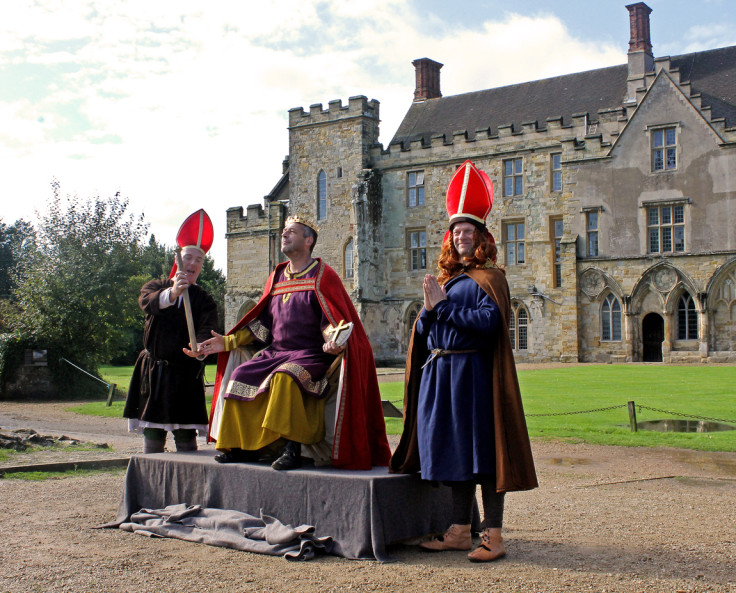
The Battle of Hastings re-enactment officially starts at 3pm, but before that, there are period-themed Anglo-Saxon attractions set up around the Abbey's ruins, such as the Time Will Tell theatre players, who entertained audiences with a summarised version of the events that led to the battle entitled We Three Kings: 1066.
Just before the battle starts, the two armies assemble at opposite sides outside the main arena field – a miniature version of the much larger battlefield, which stretches as far as the eye can see.


We caught up with Tony Linthwaite of the Crusades re-enactment group, who is playing the Count of Baloin. Linthwaite is a house husband who has been coming to Battle Abbey to re-enact the Battle of Hastings for 24 years.
His group has worked with numerous films and TV documentaries to provide accurate portrayals of people from the Crusading era.


Once the battle begins, both sides walk onto the field at opposite ends, and begin organising their troops and making rallying speeches to prepare them for war. The Normans were made up of two different groups, with one coming all the way from Normandy to take part.
As the Normans are attacking the Anglo-Saxons, the archers are sent out first and commanded to fire, in carefully coordinated manoeuvres that do not injure any of the actors on the battlefield.
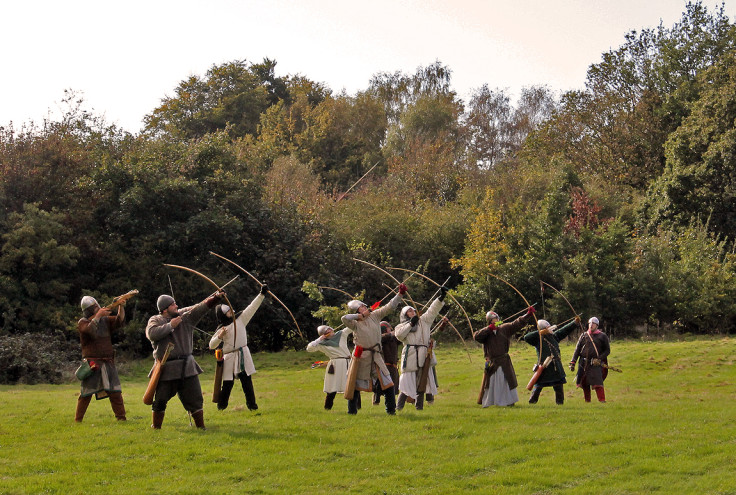
Meanwhile, the Anglo-Saxons wait at the top end of the field, forming a defensive shield wall out of wooden shields. Although they would typically have their own archers, for this re-enactment they were mostly armed with spears, axes and swords.
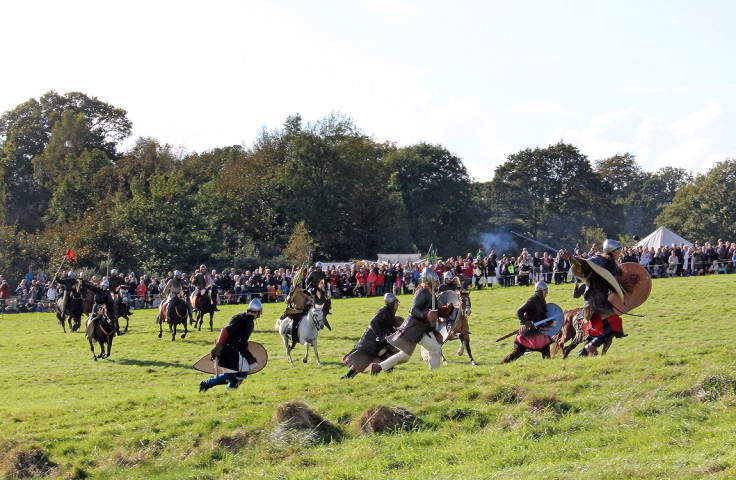
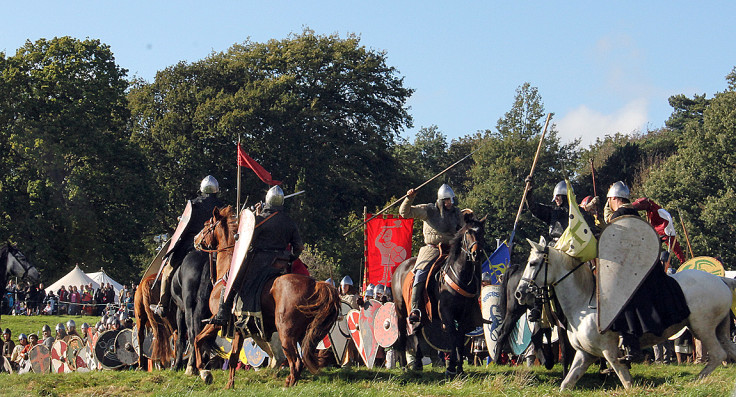
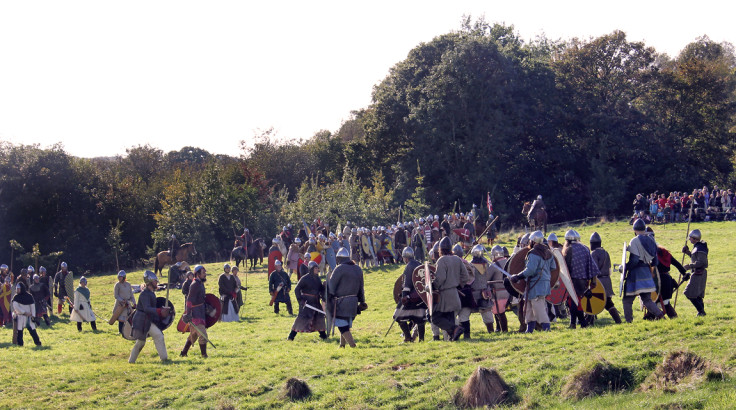
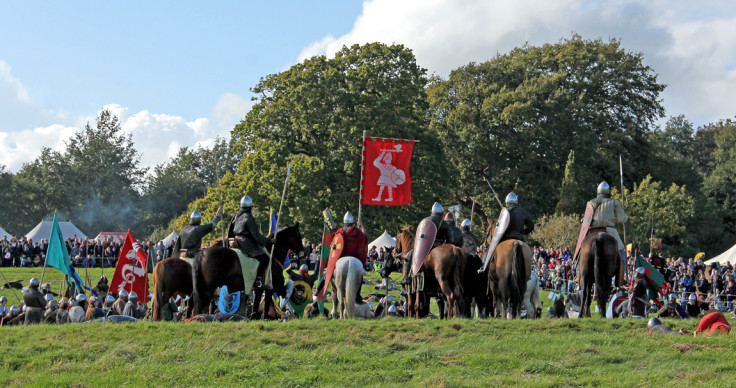
The Normans unsuccessfully attack the Anglo-Saxons' shield wall, and then fall back. Eventually they succeed in enticing the Anglo-Saxons to come out of the shield wall and attack them, and they gradually take control of the battle.
All-out war commences across the field, until King Harold is shot in the eye by an arrow and falls back. While some of the English army flees, men loyal to Harold stay and fight till their deaths, and finally the red and white Anglo-Saxon flag is handed to Duke William.

After the battle, life resumes at the "living history" camps as the tired warriors take off their chainmail and helmets, but the fun's not over yet, as public can visit the re-enactors and find out more about medieval life in England.
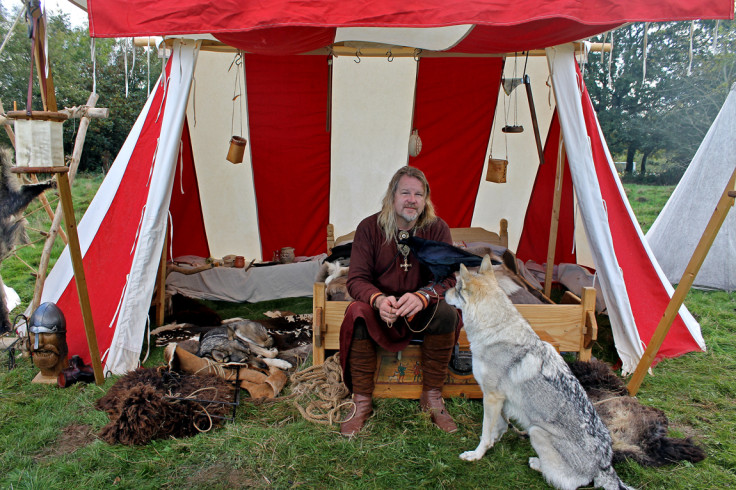
This is Andrew Johnson, a civil servant who is playing the Earl of Devonshire, a member of the Anglo-Saxon army. He has been coming to re-enact the Battle of Hastings for seven years and his clothes and weapons are made by specialised costume and propmakers in the Hildsvin re-enactment group from Devon.

Sam Topham, also part of the Hildsvin group, works for the NHS and has been coming to the Battle re-enactments for six years. He was the only monk we saw at Battle Abbey, which had once been a prosperous monastery.
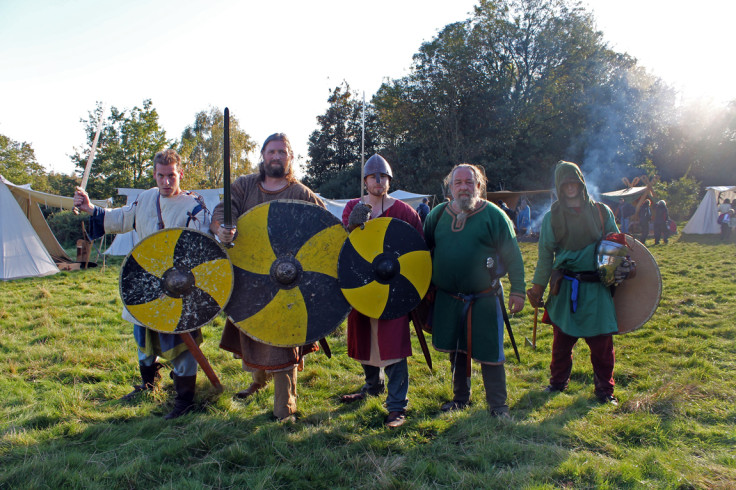
As Anglo-Saxons usually had small armies, they would enlist and pay for the help of Vikings to join their armies. Here is one of the Viking groups, played by the Hrafnsdale group.
The group is part of a larger re-enactment group known as The Vikings, the oldest re-enactment society in the UK that started in 1971.
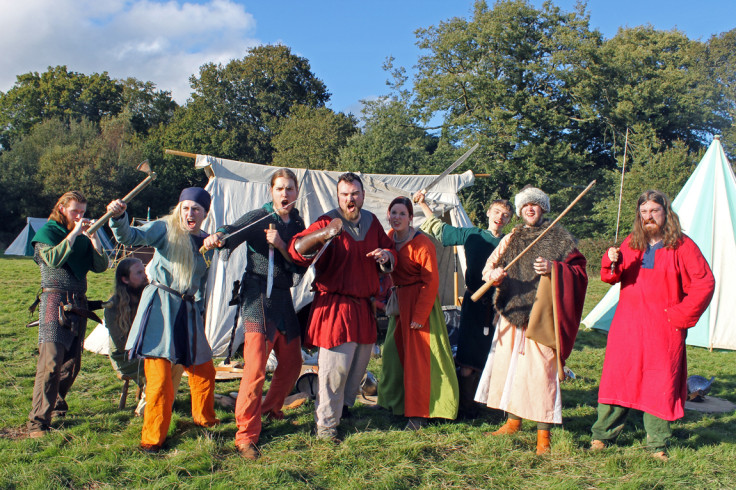
And finally, these are the Ledrahls, a group of re-enactors from Nottingham that includes a doctor, students and a civil engineer. Their group defended King Harold to the bitter end and "died" with him on the battlefield.
© Copyright IBTimes 2025. All rights reserved.




















